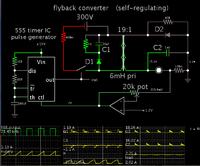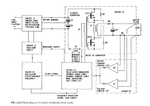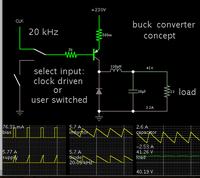David_
Advanced Member level 2
Hello.
I have little experience with DC-DC converters, in designing my own lab power supply I have begun learning but so far all I have worked with is non-isolated non-synchronous buck converters. I do find the isolation of other designs most tempting and interesting but they seem like a huge leap from the step-down converters I've gotten my head around so far and I have a couple of questions.
Would it be possible to isolate the output of any buck converter by using a coupled inductor instead of the usual inductor used in the main LC output filter?
I'm reading about Forward, Push-pull, Half bridge and Full bridge but its unclear to me which would be the most suitable to begin with. Can anyone of them be said to probably be easier to implement than others?
Regards
- - - Updated - - -
Oh, I should say that the converter that I wish to design would have a input of 230VAC and two equal outputs of 40VDC that can deliver at least 3A each.
When using a regular buck converter I could use it as a pre-regulator that maintains a small voltage over a adjustable linear regulator. Could I use a isolated converter in the same manner or does a isolated converter need to be set to a fixed output voltage?
I have little experience with DC-DC converters, in designing my own lab power supply I have begun learning but so far all I have worked with is non-isolated non-synchronous buck converters. I do find the isolation of other designs most tempting and interesting but they seem like a huge leap from the step-down converters I've gotten my head around so far and I have a couple of questions.
Would it be possible to isolate the output of any buck converter by using a coupled inductor instead of the usual inductor used in the main LC output filter?
I'm reading about Forward, Push-pull, Half bridge and Full bridge but its unclear to me which would be the most suitable to begin with. Can anyone of them be said to probably be easier to implement than others?
Regards
- - - Updated - - -
Oh, I should say that the converter that I wish to design would have a input of 230VAC and two equal outputs of 40VDC that can deliver at least 3A each.
When using a regular buck converter I could use it as a pre-regulator that maintains a small voltage over a adjustable linear regulator. Could I use a isolated converter in the same manner or does a isolated converter need to be set to a fixed output voltage?


